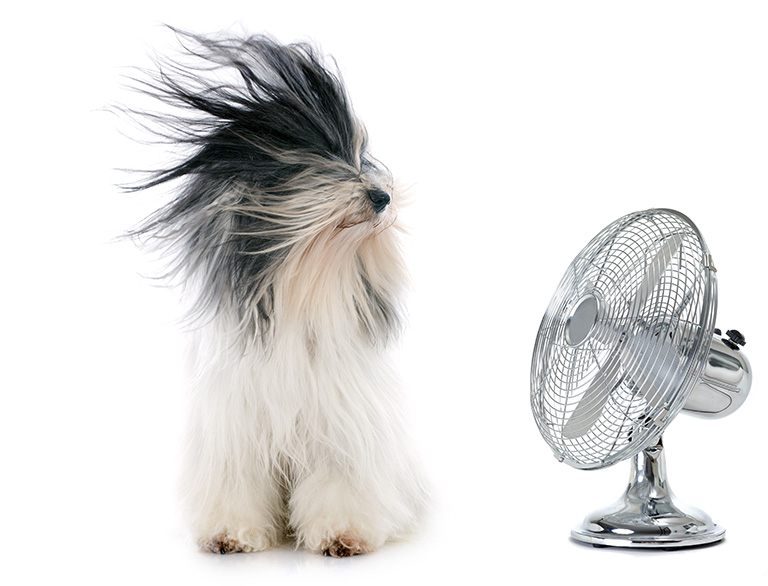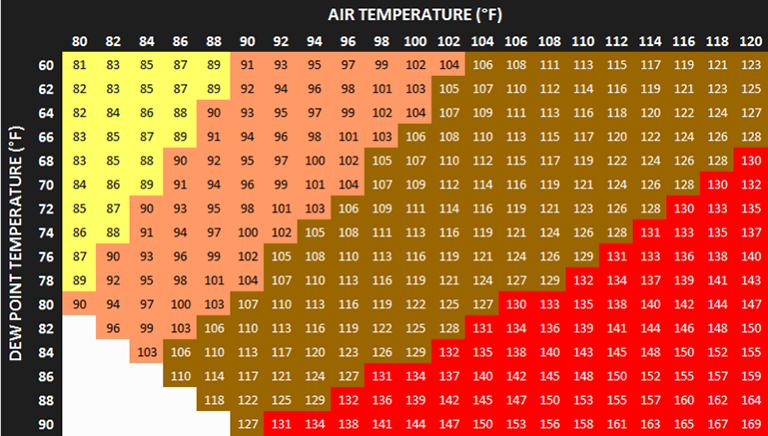Hot Enough for Ya?
As we enjoy the sticky, sunny weeks of summer, we’re all now confronted with the sun, heat, storms and humidity of August. All across the country, weather experts have been sending daily warning by projecting the “heat index” in anticipation of hot & humid weather. Major cities like NY, Boston, and Washington DC have been experiencing amazingly hot days. So, being the “Chief Heat Expert” here at KHT, I thought I’d dig in and learn more about the history and details behind the fabled heat index and pass it along for you to enjoy. Special thanks to the National Weather Service.
What is the Heat Index?
The Heat Index (HI) or humiture or humidex is an index that combines air temperature and relative humidity, in shaded areas, as an attempt to determine the human-perceived equivalent temperature, as how hot it would feel if the humidity were some other value in the shade. The result is also known as the “felt air temperature” or “apparent temperature”. We often say – “It’s not the heat, it’s the humidity” – but for the heat index, it’s actually both. The heat index is what the temperature feels like to the human body when relative humidity is combined with the air temperature.
How does it affect humans?
When the body gets too hot, it begins to perspire or sweat to cool itself off. If the perspiration is not able to evaporate, the body cannot regulate its temperature – evaporation is our natural cooling process. When perspiration is evaporated off the body it effectively reduces the body’s temperature. When the atmospheric moisture content (relative humidity) is high, the rate of perspiration from the body decreases – in other words, during humid conditions, the body feels warmer and the opposite occurs during the relative humidity decreases.
Who invented the Heat Index?
The heat index was developed in 1978 by George Winterling as the “humiture” and was adopted by the USA’s National Weather Service a year later. It is derived from work carried out by Robert G. Steadman. Much like the wind chill index, the heat index contains assumptions about the human body mass and height, clothing, amount of physical activity, thickness of blood, sunlight and ultraviolet radiation exposure, and the wind speed. Significant deviations from these will result in heat index values which do not accurately reflect the perceived temperature.
Why is this not much of an issue out west?
In arid conditions, the body actually feels cooler – as there is a direct relationship between the air temperature and relative humidity and the heat index. Hotter days can be more bearable in dry, low humidity settings.
Is there a cart or mathematical formula available to make projections?
To determine the heat index using the chart above, you need to find the air temperature and the relative humidity in your area. For example, if the air temperature is 100 F and the relative humidity is 55%, the heat index will be 124 F.
But I’m an engineer – can’t you just let me figure it out on my own?
If you prefer to enter numbers manually instead of reading a chart, and are mathematically inclined, here is an equation that gives a very close approximation to the heat index.
The formula below approximates the heat index in degrees Fahrenheit, to within ±1.3 °F. It is the result of a multivariate fit (temperature equal to or greater than 80 °F and relative humidity equal to or greater than 40%) to a model of the human body. This equation reproduces the above NOAA National Weather Service table (except the values at 90 °F & 45%/70% relative humidity vary unrounded by less than -1/+1, respectively).
What are the effects of the heat index?

Note: Exposure to full sunshine can increase heat index values by up to 8 °C (14 °F)
What’s the difference between being in the sun and in the shade?
Because the humidity index is based on temperatures in the shade, while people often move across sunny areas, then the heat index can give a much lower temperature than actual conditions of typical outdoor activities. Also, for people exercising or active, at the time, then the heat index could give a temperature lower than the felt conditions. For example, with a temperature in the shade of only 82 °F (28 °C) at 60% relative humidity, then the heat index would seem 84 °F (29 °C), but movement across sunny areas of 102 °F (39 °C), would give a heat index of over 137 °F (58 °C), as more indicative of the oppressive and sweltering heat. Plus, when actively working, or not wearing a hat in sunny areas, then the feels-like conditions would seem even hotter. Hence, the heat index could seem unrealistically low, unless resting inactive (idle) in heavily shaded areas.
What’s the best cooling off fluid to drink?
Aside from good old cold water, lemonade or iced tea, here are a few “fun” drinks we found fishing on the internet – most you’ve probably never heard. Load up the ice in your glass, splash it in and enjoy!
- Vita Coco Lemonade Coconut Water
Rich in vitamin C, this all-natural blend of coconut water and lemon juice contains the same amount of potassium as a banana and is a healthier alternative to the sugar-sweetened lemonade. Suitable for vegans, vegetarians and coeliacs. - Mr Fitzpatrick’s Rhubarb & Rosehip
This English rhubarb and rosehip tipple is perfect with some iced sparkling water. The fruity cordial is also rich in calcium and high in dietary fibre. - Mello Raw Fresh Watermelon Juice
Keep hydrated with Mello’s raw drink made with fresh watermelon and pomegranate juice. Free from anything artificial, the cold-pressed juice is a great way to replenish after a workout. - Qcumber Sparkling Water
A refreshing mix of natural cucumber water and sparkling spring water. Quench your thirst by drinking straight from a chilled bottle or use it as a mixer for a tasty summer cocktail. - Luscombe St Clements
Luscombe have blended spring water with the finest Sicilian orange juice and lemon juice to create this lightly sparkling drink. Pour into an ice-filled glass to cool down in the heat. - Hampstead Tea London Oolong Tea with Peach
A great choice choice for those who are winding down after a long day in the sun. The organic brew is made with all-natural ingredients and is full of antioxidants.






Leave a Reply
Want to join the discussion?Feel free to contribute!